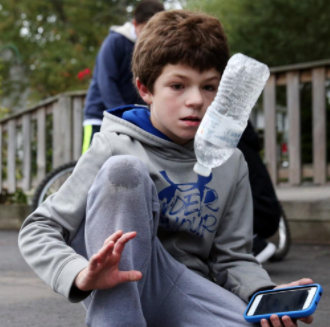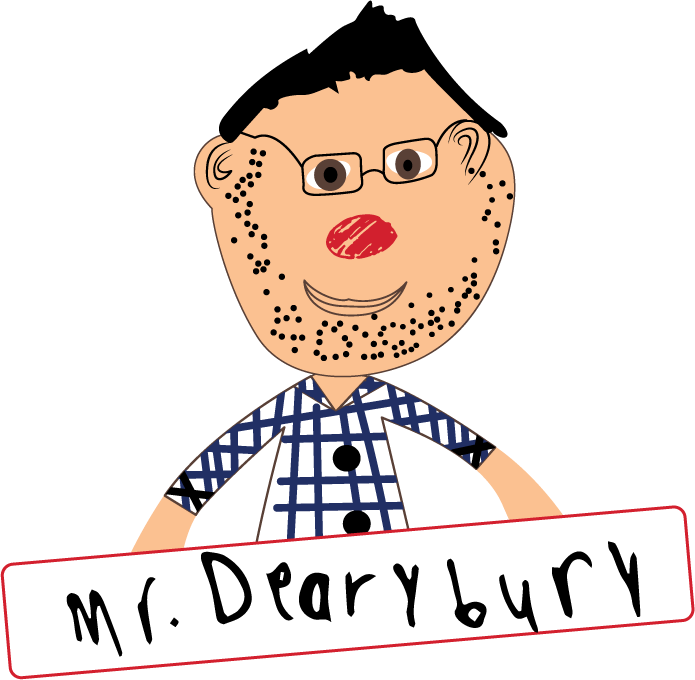When I was little, I loved Garbage Pail Kids.

I bought them every time I went to the gas station when we stopped to get my snack for school. I couldn’t wait to tear open the pack and show them to my friends. Yes, they were a slight bit crude and tasteless, but I loved them! Everyone my age did. It was the “toy” to collect for quite a while. The highlight of every pack was that little stick of gum. I’m sure my teachers hated me and every other kid bringing those things to school. They were after all “sooooooo offensive” and most assuredly, a complete distraction to the rigorous learning I was supposed to be participating in. Imagine if the teachers had capitalized on those cards, allowing students to create our versions of them. What if Garbage Pail Kids were used to teach different ELA strategies? Personally, I think they would have made for a great lesson in supply and demand, marketing, advertising, etc. I digress. They missed out on a great learning opportunity. Instead, the cards were banned, marked as evil, and had no place in- well organized classrooms of desks in rows and worksheets in ready piles.
Fast forward to my classroom some 30 years later, and it wasn’t Garbage Pail Kids that stormed my classroom, but Silly Bandz, Bey Blades, Tech Decks, and the almighty Hot Cheetos. We certainly can’t forget the great bottle flipping war that hit us all with such force that it shook us to our core.





With each of these fads, some districts, administrators, & teachers seemed to go into full on emergency preparedness mode as they drafted well thought out plans of attack to keep these education- killers out of the classroom. These “toys” have no place in the classroom. Only books and worksheets can teach you anything. Right? Along with a beautifully written lesson plan! I specifically remember hearing a school-wide announcement about the Silly Bandz ban and having to send a note home to parents informing them of their banishment from the school.
Now that I think about it… how embarrassing that my 21st Century education delivery methods were threatened by a little piece of rubber shaped like an animal or super hero.
Now that I think about it… how embarrassing that my 21st Century education delivery methods were threatened by a little piece of rubber shaped like an animal or super hero.
The same thing happened with Bey Blades. We labeled them dangerous and kids were told to never ever take them out of their bookbags. I will admit that I saw a kid get popped in the face with one, and there may have been some blood, but I’ve also seen kids stab themselves with pencils and eat the glue while making an art project, but we didn’t put out a PSA about the dangers of pencils and glue in the classroom, nor did we ban them from the building. We simply developed strategies over time to teach children the correct use of tools. Kids do not come to school knowing proper math and science skills, but you don’t see us kicking those subjects out of the building do you?
This brings me to the latest weapon to launch its war against classroom learning… those dreaded fidget spinners. If you’ve lived under a rock and haven’t seen one in action, check them out here. According to Wikipedia, the spinners were invented in 1997 by an American woman named Catherine A. Hettinger, but only recently have they become popular amongst students.
Oh the stories and complaints I’ve heard from some educators. “These things are nightmare,” exclaimed one teacher on Facebook. Another complained from her blog, “I’m just trying to do my job!” Another wrote that the fidget spinners were a “threat to America.” I’m sure she didn’t mean a literal threat to our democracy, but that’s quite a big statement to make nonetheless.
It seems appropriate here that I remind everyone that I’m not currently in the classroom for this latest battle between teachers and an evil toy, but as mentioned above, I did face the battle of Silly Bandz, the attack of the Bey Blades, and there was even a surprise resurgence of Pokémon cards while I was at the helm of the class. I do have a bit of expertise in fighting off all that would threaten our sacred educational norms. What norms? You know… kids should be sitting. In silence. Working. All day everyday. No exceptions. That’s the only way they will learn. Ever. Anything that challenges those ideals must be stopped immediately. Thus, all the bans of fidget spinners and anything else that may take away from our talking all day.
As a professional development leader for teachers across the country, I’d like to help develop us all a bit in regard to our knee jerk reactions to situations in education. So often we overreact rather than capitalizing on teachable moments. Think of the impact our perspectives have on learning and pedagogical best practice. Let’s talk about the real reasons we want to ban these spinners (and other items like them).
-
It’s May. To every non-educator reading this, let me help you understand… May to teachers is akin to driving a long road with the fuel light lit. Teachers are tired. Our jobs are emotionally draining in a way the non-education world will never ever understand. 180 days with students can cause just about anything to drive you batty… Thus, Fidget Spinners equal death to teacher nerves.
-
It’s distracting teachers more than other students. End of course tests, state tests, district tests, permanent records, grades, report cards, IEP meetings, etc. etc. We are so busy this time of year, the last thing we need is one of those things spinning.
-
Teachers are intimidated by them. For 180 days we try to hold the attention of your kids and here these little plastic spinny things have captivated them and taken them away from us. We are insulted, offended, and absolutely fed up. They must be banished!
- It challenges pedagogy. What? It is a fancy word that just means the way teachers approach their teaching. When non traditional educational items such as fidget spinners, Silly Bandz, iPads, robots, etc. make their way into classrooms, it scares some teachers because it forces them to examine their work closely. When technology began changing from overheads and film projectors to iPads and laptops, the same thing happened. Educators had all kinds of questions to ask themselves. Are lessons effectively meeting the needs of students using the art and science of teaching? Are lessons meaningful and relevant to the kids? Is the teaching delivered based on their interests rather than our personal likes? These spinners are challenging the traditional mindset. Chances are great that those who are the least effective in the art and science of teaching are the ones who are scared the most of things like spinners, funny shaped rubber bands, Cheetos, and ________ (whatever else may come next.)
I know that last point may ruffle some feathers, but pause for a moment and let’s reflect. My job is to help develop educators professionally. Development, often times, requires a good hard look in the mirror, and sometimes what we see isn’t what we want.
Rather than complaining on social media and banning everything fun from the buildings, here is what I think we should let the world see and hear from us as educators when one of these pop culture fads, like the spinners, invades our space.
A fantastic, super-duper, awesome educator would figure out how to connect these spinners to classroom learning experiences and make the most of the last few weeks of school.
-
They would Skype with the creators of spinners.
-
They would find websites, Youtube videos, and books to show their kids all about spinners.
-
They would find expert student spinners and use them to mentor those who couldn’t spin so well.
-
They would develop an inquiry-based learning unit on the who/what/where/when/why/how of spinners.
-
They would collaborate with other super-duper educators to create group projects based around spinners.
-
They would most certainly host a school wide “Fidget Spinner Day” in which all students would bring their spinners and spin all day.
-
Of course, this kind of day would require lots of extra work. They would first write a grant to guarantee funding to purchase spinners for all students.
-
They would create lesson plans to fill the day with math, science, social studies, and reading connections to the spinners.
-
They would work with the art teacher so that students could make drawings, sculptures, and paper mache´ spinners.
-
They would meet with the music teacher the week before to write a song about spinners.
-
They would go to the gym on their planning period to create a game all about spinners with the P.E. teacher.
-
They would make sure the library had lots of books available about things that spin, gravity, force and motion, Newton’s laws, etc.
-
They would ask parents to attend the day and spin with their kids.
-
They would contact local businesses and professionals to attend the day and share about how spinning objects may be part of a possible career path.
-
They would contact the local media asking them to highlight the event as an innovative day of learning on the evening news.
-
They would even email and phone local legislators to invite them to see the true power of an effective educator who does whatever it takes to teach students.
-
Before they left school they would upload pics from the day to the class blog, class website, and social media to show the world how awesome “Fidget Spinner Day” was.
-
When they finally made it home, they would think about every aspect of the day and immediately start making plans to make next year’s even bigger and better… of course maybe they’d do that after a tall glass of something red.
-
The next time May rolls around, and you’re distracted by all of the end of the year work, and some new fad tries to attack your classroom, think about the fantastic, super-duper, awesome educators, and choose your response wisely. Don’t overreact.




